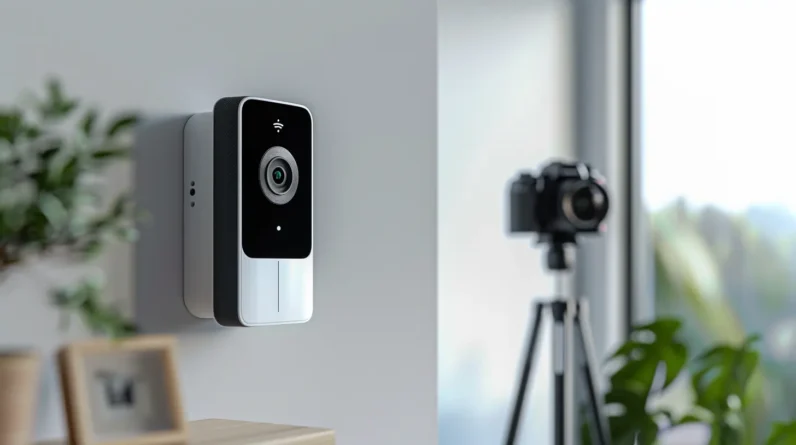
Smart doorbells offer real-time alerts and easy installation, making them great for remote monitoring. Traditional cameras, while requiring complex setup, provide extensive coverage. Both enhance security, but smart doorbells excel in convenience with motion detection and user-friendly apps. Traditional cameras capture vital evidence continuously. Cost-wise, smart doorbells have higher upfront costs but save energy and may reduce the need for additional security. As we compare these options further, we’ll uncover which best suits your needs.
Understanding Smart Doorbells
Smart doorbells have revolutionized the way we secure our homes. These innovative devices combine sleek doorbell designs with advanced motion sensors to enhance our home security. With smart doorbells, we can monitor our front porch or entryway in real-time, receiving instant alerts on our smartphones whenever someone approaches or rings the bell. The integrated motion sensors detect any movement near our doorstep, triggering the camera to start recording and sending us a notification. This allows us to see and communicate with visitors, whether we’re at home or away, providing an extra layer of security and convenience.
Exploring Traditional Cameras
While smart doorbells offer a modern approach to home security, traditional cameras have been a reliable choice for surveillance for many years. These camera systems often consist of multiple cameras placed around the property, connected to video recorders that store the footage for later review. Traditional cameras can be a bit more complex to set up, as they may require professional installation and a central hub to manage the system. However, they offer a wider range of camera types, including dome, bullet, and PTZ (pan-tilt-zoom) cameras, giving us more flexibility with regard to coverage and functionality.
Comparing Security Features
As we explore into the security features of smart doorbells and traditional cameras, it’s clear that both offer unique advantages. Smart doorbells excel in real-time alerts and remote monitoring. With advanced motion detection, they can notify us instantly when someone approaches our doorstep, enhancing our safety measures. Traditional cameras, however, often provide more extensive coverage and continuous recording. They may not offer the same immediate notifications, but they can capture vital evidence in case of an incident. When it comes to motion detection, smart doorbells are generally more sensitive and can be fine-tuned to minimize false alarms. Traditional cameras, while reliable, may require more manual configuration.
Evaluating Ease of Use and Installation
When considering the ease of use and installation of smart doorbells and traditional cameras, we must look at the setup process and daily operation. Smart doorbells often offer easy installation, with many models featuring wireless connectivity and simple mounting procedures. This user-friendly approach allows for quick setup without the need for professional assistance. Traditional cameras, on the other hand, may require more complex wiring and configuration, potentially necessitating expert help. With regard to daily use, smart doorbells provide a seamless user experience with intuitive apps and instant notifications, while traditional cameras may lack the same level of convenience and accessibility.
Assessing Cost and Value
Turning our attention to the cost and value of smart doorbells and traditional cameras, we must consider the initial investment and long-term benefits. While smart doorbells may have a higher upfront cost, they offer several advantages that can lead to cost savings over time:
- Energy efficiency: Smart doorbells are designed to operate efficiently, reducing energy consumption and lowering utility bills.
- Remote monitoring: With smart doorbells, we can monitor our homes remotely, potentially reducing the need for additional security measures.
- Insurance discounts: Some insurance providers offer discounts for homes equipped with smart security devices, offsetting the initial investment.
- Preventive action: By alerting us to potential threats, smart doorbells can help prevent costly break-ins and property damage.
When evaluating the cost and value, we should consider our budget constraints and weigh the long-term benefits against the initial investment.
Conclusion
To sum up, while smart doorbells offer convenience and advanced features, we mustn’t forget the humble traditional camera. It may not have all the bells and whistles, but it gets the job done without demanding a Wi-Fi connection or constant software updates. Let’s appreciate the simplicity of the past as we embrace the complexity of the future. After all, a watchful eye is a watchful eye, whether it’s digital or analog.







